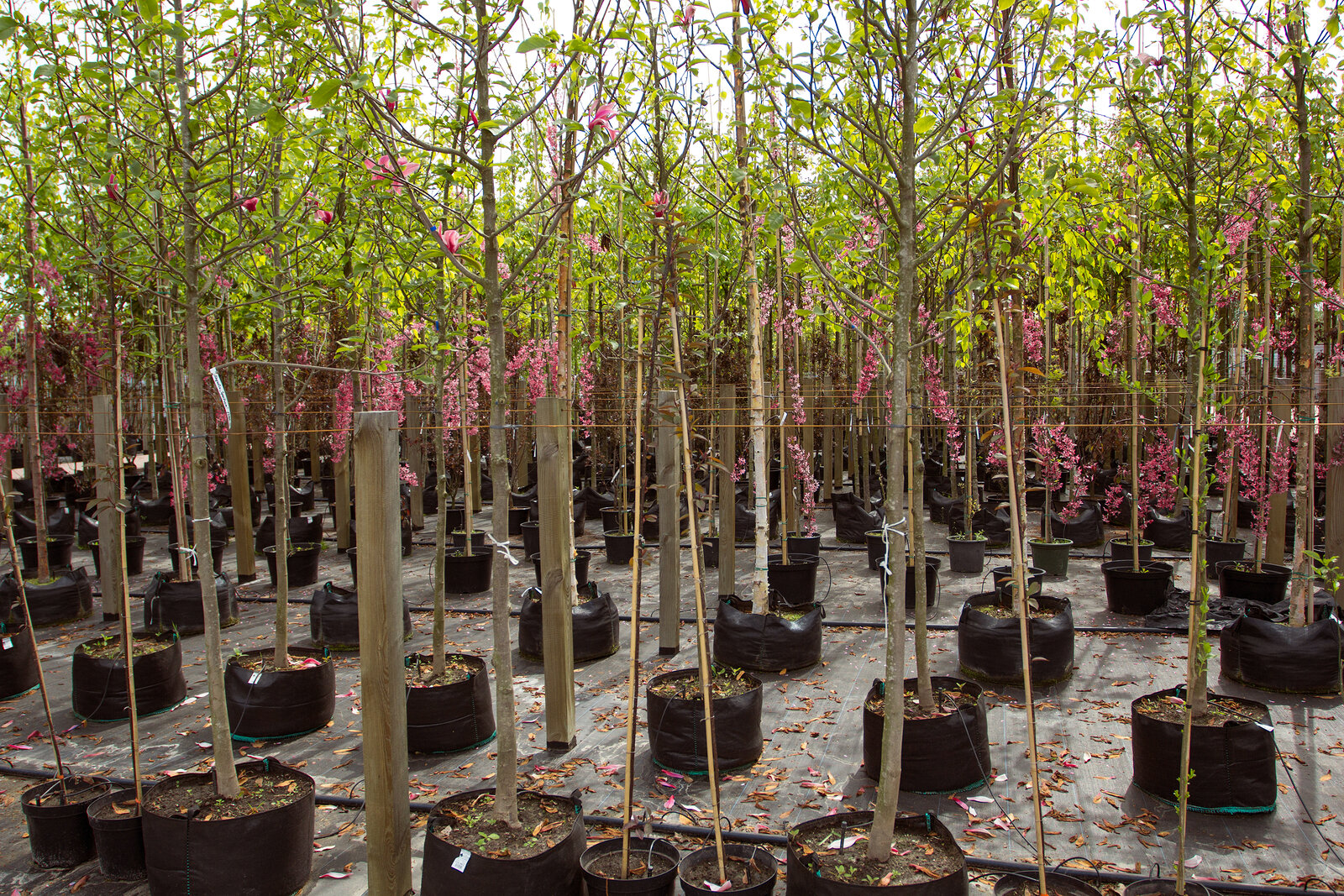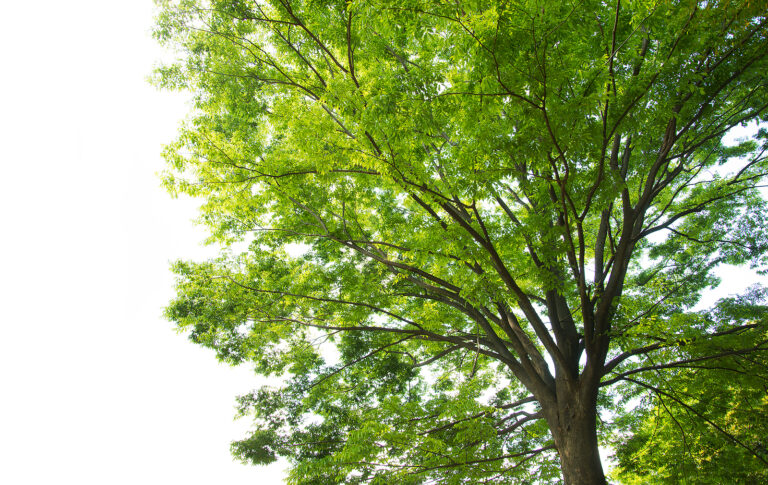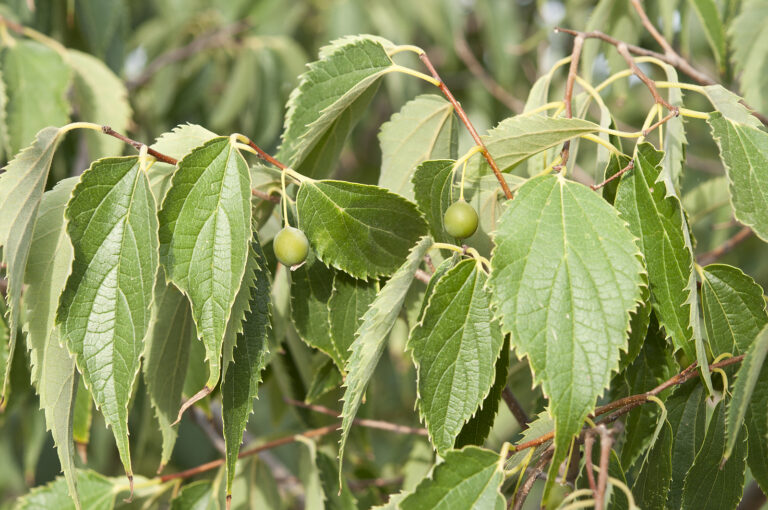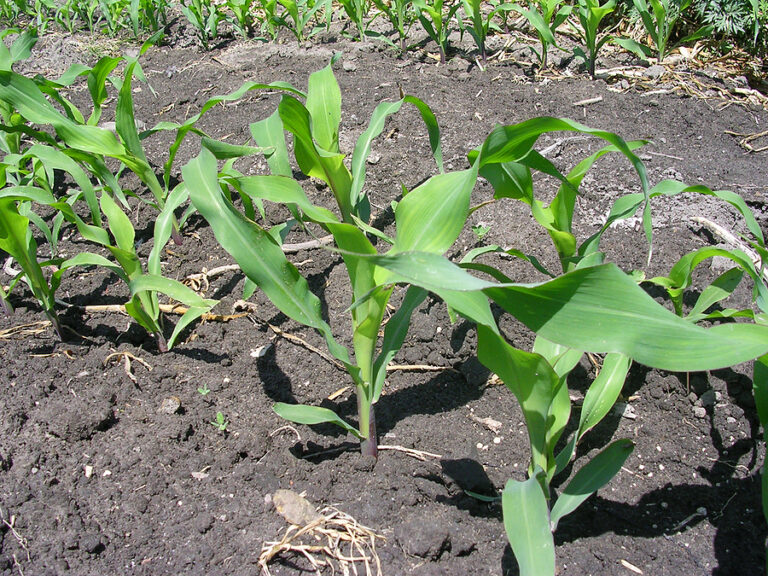How to Plant a Tree
Planting a tree is not difficult. More difficult is the time it takes to decide where to plant a tree and which tree to plant.
Trees more than any other plants lend a sense of permanence to a garden or landscape. A tree will be where you plant it for decades and some for centuries.
To plant a tree, you must first consider the size of the tree at maturity and how it will fit into and enhance the landscape. Next, you must find a tree that is suitable for the garden’s soil, climate, and exposure.
Once a tree is chosen, you must decide where to plant it. Consider the tree’s visual impact—its shape and form and the color of its leaves and flowers. Consider the visual impact and what it will add to the garden season by season. Design consideration complete and the name or names of the tree you need in hand, it will be time to visit a garden center or nursery and get your tree.
How to select a tree
Here are a few things to keep in mind when you go to buy a tree:
- Trees may be purchased container-grown, bare-root, or balled-and-burlapped. Deciduous trees, not evergreens or palms, are sold bare-root; they are often younger. Container-grown and ball-and-bulapped will be older—and more expensive.
- Trees can be purchased in a variety of sizes and stages of maturity. Young trees are often quicker to establish themselves, to root. Older trees are larger and can make an immediate impact.
- If you want to purchase a container-grown tree, ask for assistance removing it from the container so you can check the roots. Look for a well-rooted tree, but not one that is pot-bound with roots circling in the container. The soil in the container should cling to the roots not fall away when the tree is taken from the pot. Container grown trees can be planted at any time, but spring and fall are optimal.
- If you want to purchase a balled-and-burlapped tree, make sure the tree has well-developed roots that spread evenly in each direction. Be sure the soil and roots are not dry; they should be just moist. The best time to plant a balled-and-burlapped tree is in spring; the second-best time is fall.
- If you want to purchase a bare-root tree, make sure the tree has well-developed roots that spread evenly in each direction. Make sure the roots are plump and moist, not withered or dry. Spring is the best time to plant bare-root trees.

When to plant a tree
Here’s a simple guide to know the best times to plant a tree:
- Container-grown trees can be planted any time of the year with the exception of very hot, dry weather or drought and very cold weather.
- Deciduous bare-root trees are best planted between mid-fall and mid-spring but not in the very coldest part of winter.
- Hardy evergreen trees are best planted between mid-fall and mid- to late spring.
- Balled-and-burlapped trees are best planted in early to mid-fall or mid- to late spring; in mild winter regions, they can be planted in winter.
Fall planting allows a tree’s roots to become established before the onset of winter; this also allows the tree to become established before the heat of summer. In very cold regions where the soil heaves in winter, plant trees in early spring as soon as the soil can be worked.
Site preparation ahead of tree planting
Prepare the planting site in advance of planting. Here’s how:
- Choose a well-drained site. Soil that drains poorly may be difficult to fix; start by amending the soil with aged compost or commercial organic planting mix. A hole filled with water that does not naturally drain in 8 hours may be a poor site for planting.
- Remove sod and other plants from the planting area; this eliminates competition for nutrients and soil moisture.
- Prepare a hole two to four times as wide and half again as deep as the tree’s root ball, even larger is better. Use a garden fork to score the sides of the hole; this will allow roots to spread more easily into the native soil.
- Drive a tree stake into the hole just off-center before planting the tree. Driving a stake in place after the tree is set could damage the root ball.
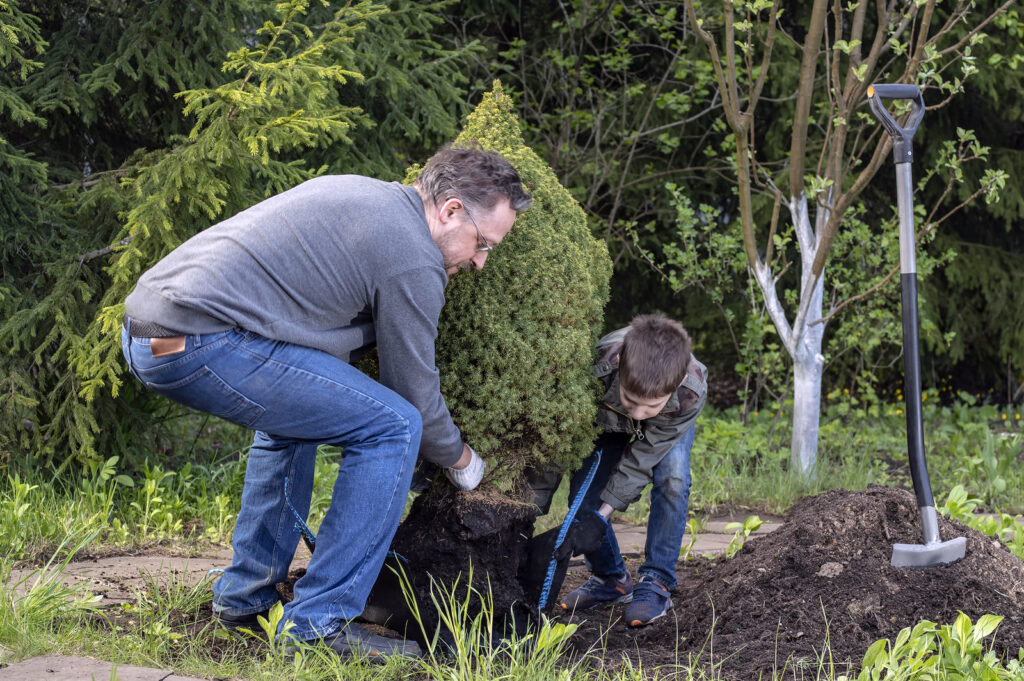
Planting a container-grown tree
- Moisten the soil in the container; stand the container in water for half an hour or until the soil is moist.
- Remove the container being careful not to damage the tree or its roots; you may need to cut the container away.
- Tease the roots away from the root ball; use your fingers or a hand fork. Do not plant a root-bound tree.
- Trim away any broken or damaged roots.
- Check the planting depth of the hole; place the tree in the hole and check the soil mark—a dark mark near the base of the stem; this indicates the level the tree was growing in the container or nursery. Place a stake across the hole alongside the stem; add soil beneath the root ball so that the soil mark is level with the stake.
- Backfill the hole firming in the soil as you go; firming the soil will remove air pockets around the roots.
- Secure the tree to the stake with one or more ties.
- Water well and apply thick mulch to conserve soil moisture.
Planting a bare-root tree
- Prepare the site as you would for container-grown trees; the hole should be wide enough for the tree’s roots to be spread fully.
- Drive a single stake just off center of the planting hole.
- Create a cone of soil at the bottom of the home; set the tree on top and spread the roots down the cone in all directions. Adjust the planting depth as needed.
- Partially backfill the hole; be sure the soil is filling in around the roots.
- Continue to backfill and firm the soil in place until the hole is filled.
- Water the tree well and mulch around the trunk.

Planting balled-and-burlapped trees
- Prepare the planting site.
- Prepare the planting hole; the hole should be twice the width of the ball, or in clay soils, three times the width.
- Place the tree in the hole to the correct depth then loosen the burlap or netting around the root ball.
- Set the stake in place.
- Score the edges of the soil around the roots then backfill the hole.
- Water thoroughly and mulch.
Tree care after planting
- Keep newly planted trees well-watered for two to three years after planting especially during hot weather and drought.
- Keep the surrounding area free of grass and weeds which can compete for soil moisture and nutrients.
- Mulch around trees to keep weeds down and conserve soil moisture.
- Protect trees from drying winds and very cold temperatures.

